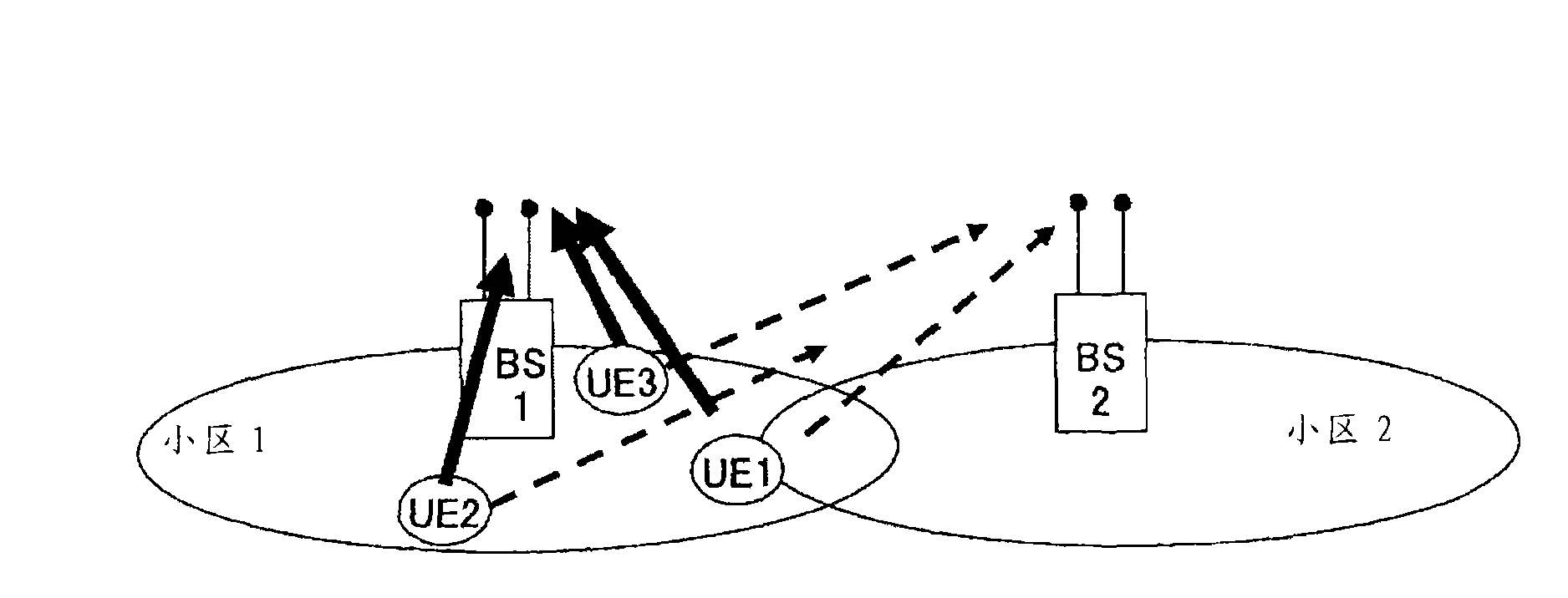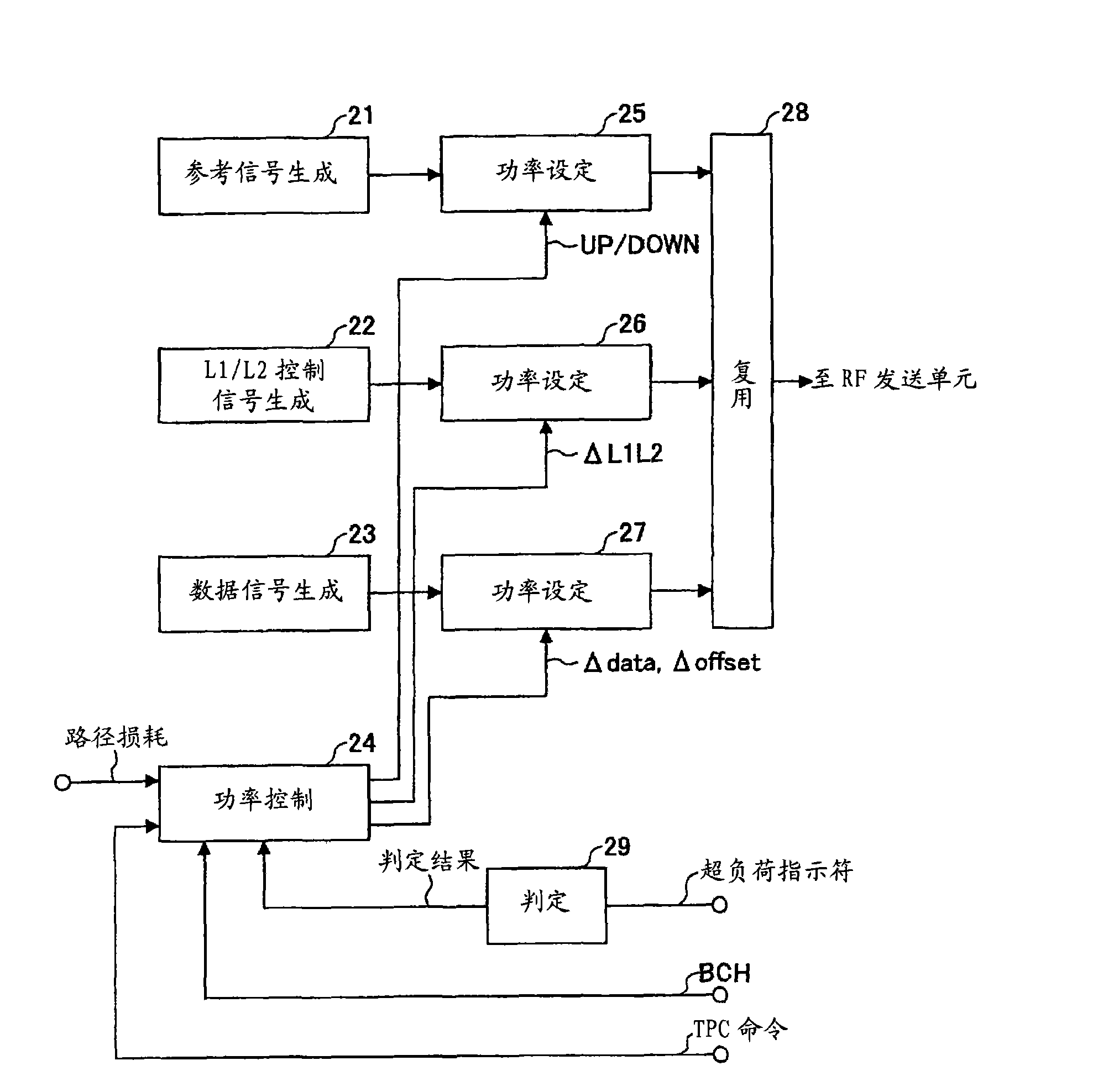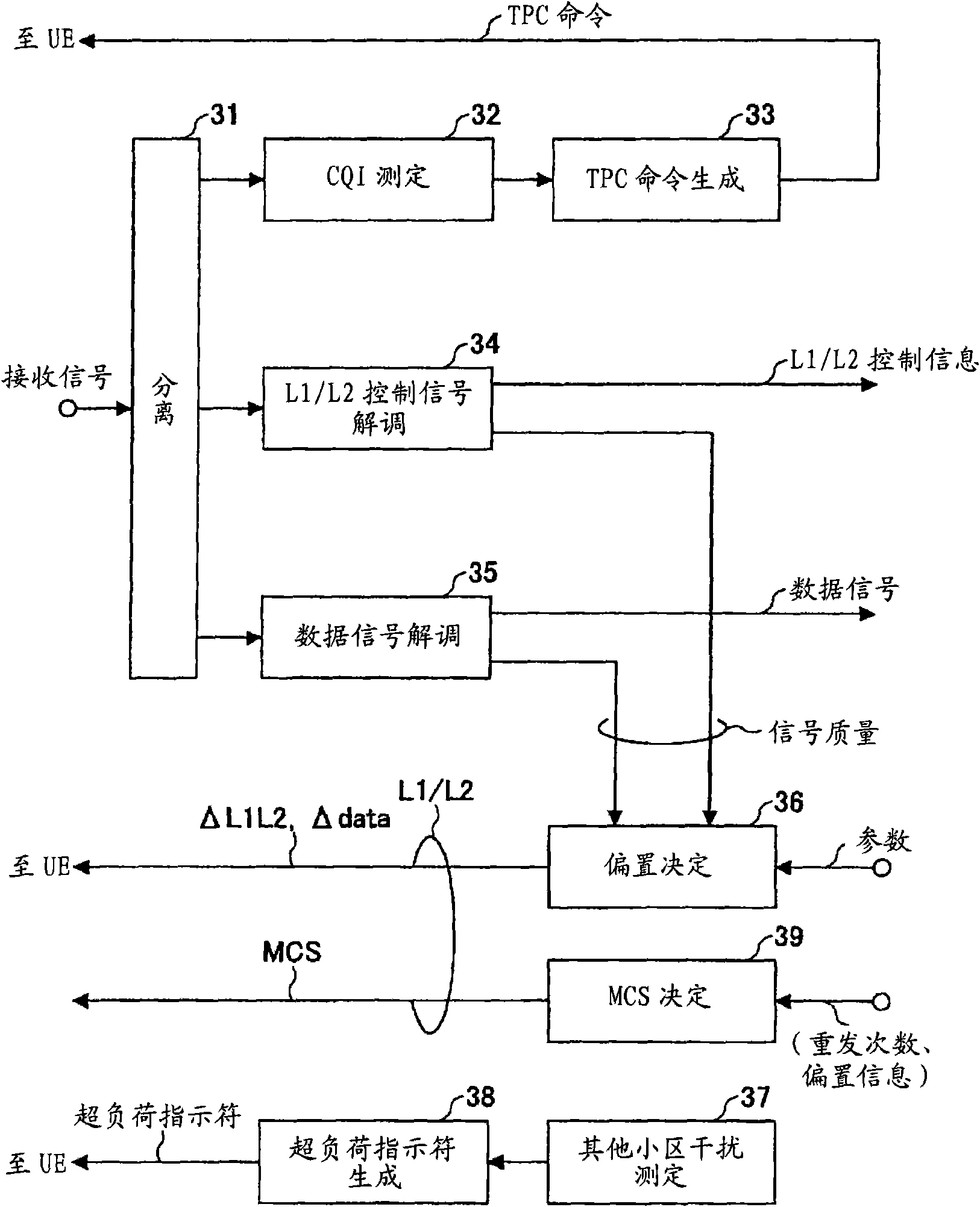Base station device, user device, and method used in mobile communication system
A mobile communication system and user device technology, applied in the field of base station devices, can solve the problem that the signal power density is higher than the total transmission power, and achieve the effect of appropriate transmission power
- Summary
- Abstract
- Description
- Claims
- Application Information
AI Technical Summary
Problems solved by technology
Method used
Image
Examples
Embodiment 1
[0051] (user device)
[0052] figure 2 A partial block diagram showing a user device according to an embodiment of the present invention. A user apparatus is generally used in a mobile communication system using a single-carrier method for uplink and an OFDM method for downlink, but it may also be used in other systems. figure 2 Reference signal generation unit 21 , L1 / L2 control signal generation unit 22 , data signal generation unit 23 , power control unit 24 , power setting units 25 , 26 , 27 , multiplexing unit 28 and decision unit 29 are depicted in .
[0053] The reference signal generation unit 21 prepares reference signals to be transmitted in uplink. The reference signal is any signal known at the transmitting side and the receiving side, and may also be called a reference signal, a pilot signal, a training signal, a known signal, or the like. The reference signal includes a reference signal for CQI measurement transmitted in a broadband including a plurality of ...
Embodiment 2
[0116] such as with figure 1 As described in connection with the determination unit 29 of , the user equipment may always respond to a request for power reduction from a neighboring cell (another cell or a non-connected cell), or may respond with any conditions attached. Whether to respond can be judged by the user equipment itself, and can also be judged by the base station of the local cell. In any case, in the decision unit 29, it is finally confirmed whether to respond to requests from other cells. The presence or absence of a request for power reduction is judged by whether or not a signal called an overload indicator is received from another cell.
[0117] Depending on the communication status, it is considered that it is better to comply with requests for power reduction from neighboring cells and vice versa.
[0118] (1) For example, the path loss L of the local cell measured in the local cell SIf it is larger than the predetermined threshold, a correspondingly larg...
Embodiment 3
[0134] Figure 9 Indicates the third offset (Δ offset ) flow chart. This process is performed in the user device.
[0135] In step S1, permission (permission) is obtained from the base station apparatus (according to the uplink scheduling information included in the downlink L1 / L2 control signal), and the uplink data signal is transmitted. This step itself can be used with Figure 7 corresponding to step S3 or step S15. For the sake of illustration, it is assumed that the transmission power of the uplink data signal is initially Pref+Δ data (Δ offset =0).
[0136] In step S2, it is confirmed whether the user equipment receives an overload indicator from a neighboring cell. In this embodiment, when another cell interference exceeding an allowable value is measured in a certain cell, the certain cell notifies other cells (neighboring cells) of an overload indicator within a certain period of time. Therefore, when the user equipment transmits an uplink signal and the inte...
PUM
 Login to View More
Login to View More Abstract
Description
Claims
Application Information
 Login to View More
Login to View More - R&D
- Intellectual Property
- Life Sciences
- Materials
- Tech Scout
- Unparalleled Data Quality
- Higher Quality Content
- 60% Fewer Hallucinations
Browse by: Latest US Patents, China's latest patents, Technical Efficacy Thesaurus, Application Domain, Technology Topic, Popular Technical Reports.
© 2025 PatSnap. All rights reserved.Legal|Privacy policy|Modern Slavery Act Transparency Statement|Sitemap|About US| Contact US: help@patsnap.com



